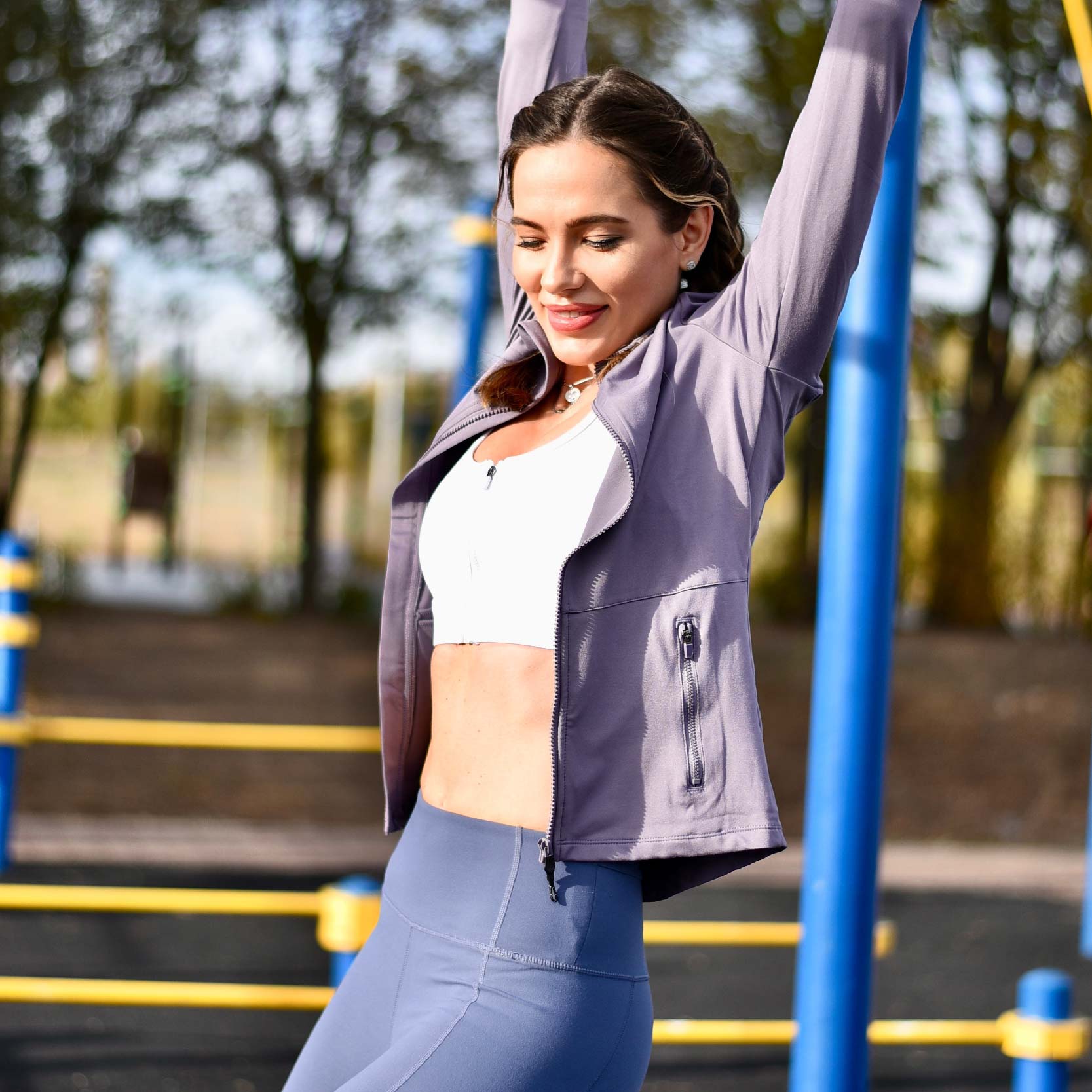Yoga For Beginners: Everything You Need To Know
For many years, thousands of individuals have been practicing yoga to reap the benefits of this mind-body practice. Yoga is an ancient form of therapy and a great way to stay healthy, learn about oneself, and find peace. And everyone can do yoga no matter what their shape, size, or age.
In this post, we'll discuss the right things to know before starting yoga.
10 things a beginner must know before practicing yoga
Every yoga newbie needs to be aware of the following ten things:
1. Yoga is not a religion or a cult
Some might be surprised to hear this because yoga is often affiliated with spiritualism. People are often amazed that it is not a religion when they hear "yoga."
The fact is that yoga was developed for physical and mental health, not as a religious practice. Yoga has been adopted by people of different faiths all over the world as a way to improve their overall health.
2. Nobody can do yoga right the first time
Do not let this discourage you from trying it. Just know that every beginner yoga student makes mistakes, but that does not mean they cannot gain significant benefits from practicing yoga regularly.
It is usual for beginners to feel unbalanced or challenged in poses because of unfamiliar feelings and sensations. Over time, you will get better just by practicing more each day.
3. Everyone has a unique experience
People are built differently. Some beginners will be flexible and quickly adjust to the postures that they are practicing, while others may feel unbalanced or uncomfortable.
Even beginner yoga students can develop greater flexibility, strength, and balance as they progress through practice. It is essential to remember that everyone is different and should do what feels right for them rather than following other students' traditional poses.

4. Listen to your body
Let your body practice slowly. Beginners may feel more confident practicing at their own pace and without constantly forcing themselves to do the postures or get into an uncomfortable pose.
If you are experiencing any discomfort, it is best to refrain from going deeper in poses for that day. Your body needs time to heal after doing yoga every day, so taking a break is the best thing to do after practicing a new yoga pose for the first time and letting your body recover naturally.
5. You need props to do yoga
While starting yoga, you might wonder how to do some poses. You might be surprised to learn that it is possible to do a yoga pose without using props like blocks or straps.
Many beginners find it helpful to use a mat and blankets for their comfort. In addition, many people can benefit from using a belt for support. When just getting started with yoga, it is best to use whatever props you need to support yourself in the poses you want to achieve safely and comfortably.
6. Get the proper foundation
Your hands and feet carry the most weight during your yoga poses. These vital muscles make all other yoga poses possible, so start with them first. If you do not develop solid feet and hands, achieving a good range of motion in your body and getting into the correct poses will be very difficult.
Be sure you are not putting too much pressure on yourself at first when you are practicing. It is essential to keep your hips and shoulders relaxed while establishing good alignment in front of a mirror or the wall behind you for daily guidance.

7. Do not expect instant results
Yoga is not a quick fix for your health and fitness goals. It takes time and consistency to get the benefits you seek, so do not expect immediate results or miracles.
Practicing yoga may take time, but it is well worth it. You will begin to experience the benefits of this practice almost immediately, but these rewards will keep growing over time.
8. Put on comfortable clothes
You can wear whatever you want to yoga class. However, loose clothing is often recommended for yoga.
Also, wear comfortable clothes that let you move around freely. Comfort should be your top priority when exercising, so go ahead and pick up some loose-fitting outfits.
9. Practice makes perfect
Each student will have different goals and reasons for practicing yoga. Whether it’s a weight loss program, improving flexibility, or strengthening the core, the most important thing is to practice yoga regularly.
To get the most benefits from this exercise, practice it regularly and be consistent with your schedule for at least six months. Just a few minutes every day of practice will bring you great benefits in time.
10. Power yoga
The practice follows a predictable sequence of moves based on the physical and breathing movements.
Yoga emphasizes pose alignment, which is excellent for strengthening, stretching, and toning your body. It is also quite popular among people who lead active lives and must move their bodies often.

Types of yoga
Here are some of the most common types of yoga you will encounter when you learn more about it.
1. Hatha yoga
It is a form of physical exercise practiced by millions of people worldwide. Yoga trains the physical body and helps you to relax in your mind.
The poses taught in this style are designed to strengthen and stretch the muscles, improving your posture and balance. It has become one of the most popular forms of yoga because you can do it at home.
2. Vinyasa yoga
Vinyasa is a type of hot yoga where the practitioner follows the flow of the breath with such swiftness that it's almost like a dance. The vinyasa method emphasizes a continuous movement from one pose to the next.
Followers of this form are known as "faster practitioners," as they get better at moving through poses at high speed, they can move into less complex postures that are harder to achieve in traditional yoga.
3. Iyengar yoga
Founded by B.K.S. Iyengar, this style is a more individual practice, and it aims to help the practitioner improve their posture, flexibility, and balance - all of which you can achieve through the proper use of yoga props like blocks and straps.
One of the main centers of this type of practice is Hawaii, where guru Iyengar lived for most of his life before moving to Pune in India. Here, he created his system with several principles designed to bring attention back into the center of the body as you move through a vinyasa flow.

4. Ashtanga yoga
Ashtanga means eight-limbed in Sanskrit, and it is a set of sequences through which you can achieve the maximum results possible in a short time. It includes physical postures, breathing techniques, and deep meditative breathing to achieve the best possible outcomes.
Interestingly, Ashtanga yoga can be traced back to 17th-century India, developed by a sage named Svatmarama. If you want to calm your mind, body, and soul, this is the perfect form of yoga.
5. Bikram yoga
Bikram yoga is often called "hot yoga." And it is one of the hottest forms of yoga. It is practiced in a hot room that reaches 40 degrees Celsius.
As many people know, this type of heat helps you stretch more and release muscle tension, thus improving your flexibility. Bikram sessions are usually 90 minutes long, and during this time, you will do a series of 26 postures designed by Bikram Choudhury.
6. Yin yoga
The slow-paced and relaxed yoga style practiced in the animist tradition, Yin, means "still" in Sanskrit. It is used to calm the mind and relieve stress at a cellular level.
This form of yoga emphasizes mindfulness while performing poses and breathing techniques, thereby improving your focus and concentration levels. Visitors of this type of class can create an experience that integrates physical postures with deep relaxation techniques.
6. Yin yoga
The slow-paced and relaxed yoga style practiced in the animist tradition, Yin, means "still" in Sanskrit. It is used to calm the mind and relieve stress at a cellular level.
This form of yoga emphasizes mindfulness while performing poses and breathing techniques, thereby improving your focus and concentration levels. Visitors of this type of class can create an experience that integrates physical postures with deep relaxation techniques.

7. Kundalini yoga
Developed by Yogi Bhajan in 1969, Kundalini is a type of yoga that focuses heavily on the anatomy of the spine. It's based on a set of meditation techniques that offer unique benefits to the practitioner.
Kundalini is a great way to balance and strengthen your body through postures, breathing exercises, and chanting. In addition, it helps you relax and center yourself to find stability in your life.
8. Restorative yoga
Yoga focuses on rest and healing. As the name suggests, restorative yoga is done horizontally to restore and heal the body.
After a long day at work or school, restorative yoga is a way to reduce stress. Using props like blocks and blankets, you can place yourself into supported poses that will allow your body to relax and recover from daily activities that strain it.
9. Prenatal yoga
Moms-to-be are often advised to avoid strenuous exercise since it could cause harm to the fetus. But you do not need to miss out on your yoga routine. You can do prenatal yoga without any risk of harming the baby.
Prenatal yoga can help you manage your exercise and improve your health and wellness during pregnancy. Even though a lot of work goes into performing such postures, the end result can be quite rewarding for both mom and baby.
10. Power yoga
The practice follows a predictable sequence of moves based on the physical and breathing movements.
Yoga emphasizes pose alignment, which is excellent for strengthening, stretching, and toning your body. It is also quite popular among people who lead active lives and must move their bodies often.

Benefits of yoga
The different yoga types have other benefits you can gain from practicing them. Let us check them out.
1. Boosts flexibility, balance
When you practice yoga, you will get a lot of benefits that are related to your flexibility. Flexibility is something that you can improve with just a little bit of effort. By doing some simple exercises, you will get the chance to improve at this aspect.
The poses in yoga will guide you in learning how to balance your body. If you have problems with your balance, yoga is a great way to improve that area. You can suspend yourself in many different ways and learn how to handle things better when on the ground or in the air for a long time.
2. Stimulates the mind
Yoga is fantastic in terms of improving concentration and focus. Spending time with yoga can boost your productivity.
3. Reduces stress and anxiety
The benefits of yoga are excellent when it comes to stress management. The best part? It happens naturally. By getting into the perfect position for yoga, you can relax your body, and your mind will start to feel better.

4. Help with weight management
If you are looking at losing a few pounds or simply managing your weight, then yoga is excellent to help. Yoga miraculously affects the body when controlling weight and letting the body react positively.
5. Good for your heart
The benefits of yoga are even better when it comes to heart health. The ability to relax and de-stress the body will help you to keep your heart healthy.
6. Increases confidence
You will find yourself feeling more confident when you start practicing yoga. After a while, you can feel like a yoga master, which would be amazing. You can get the chance to improve your flexibility and improve your performance in different activities as well.
7. Strengthens your joints
The yoga movements are repetitive, and you can do it daily. It will help you to maintain your joints and avoid the pain that comes with muscle problems.






